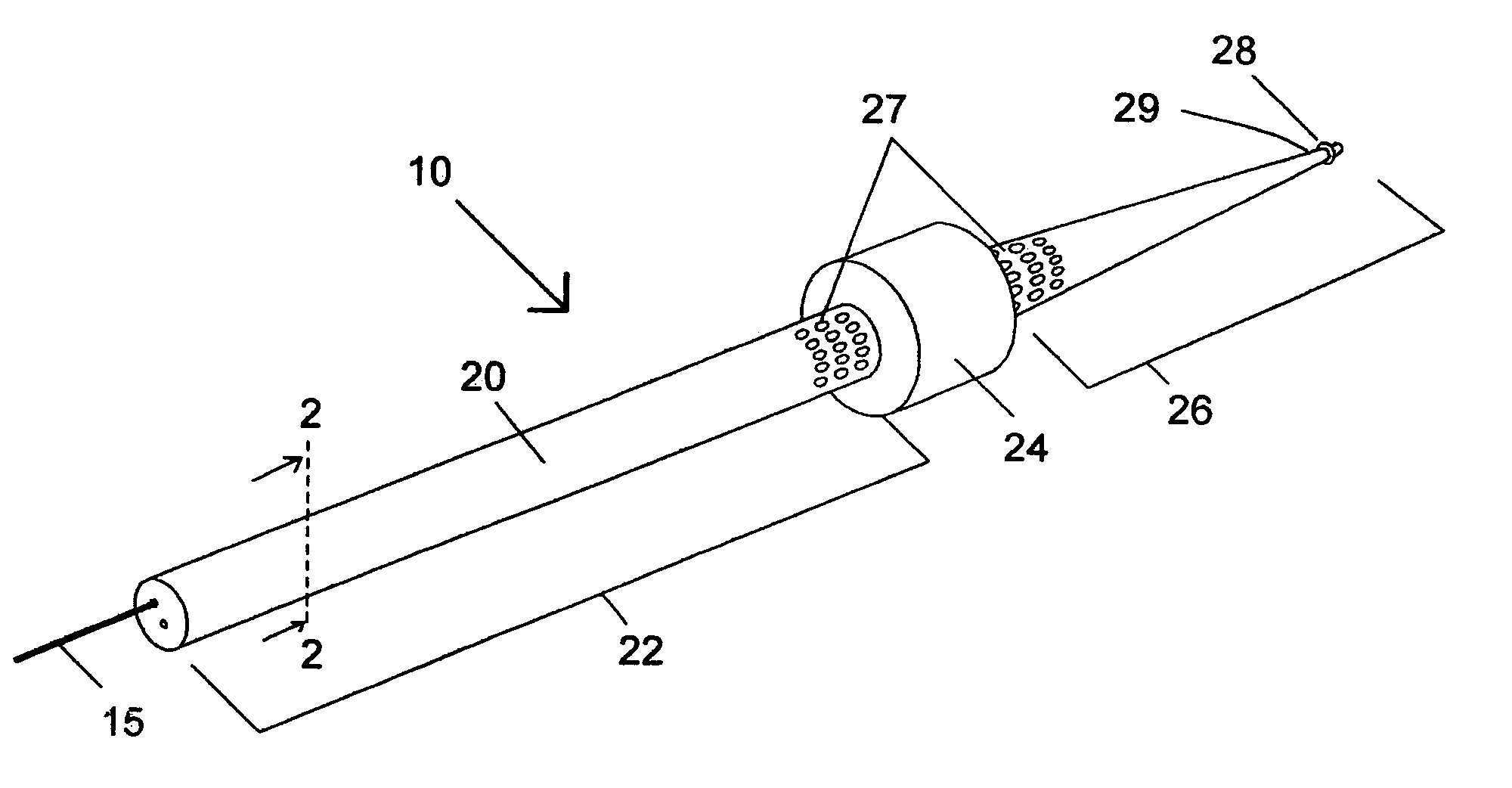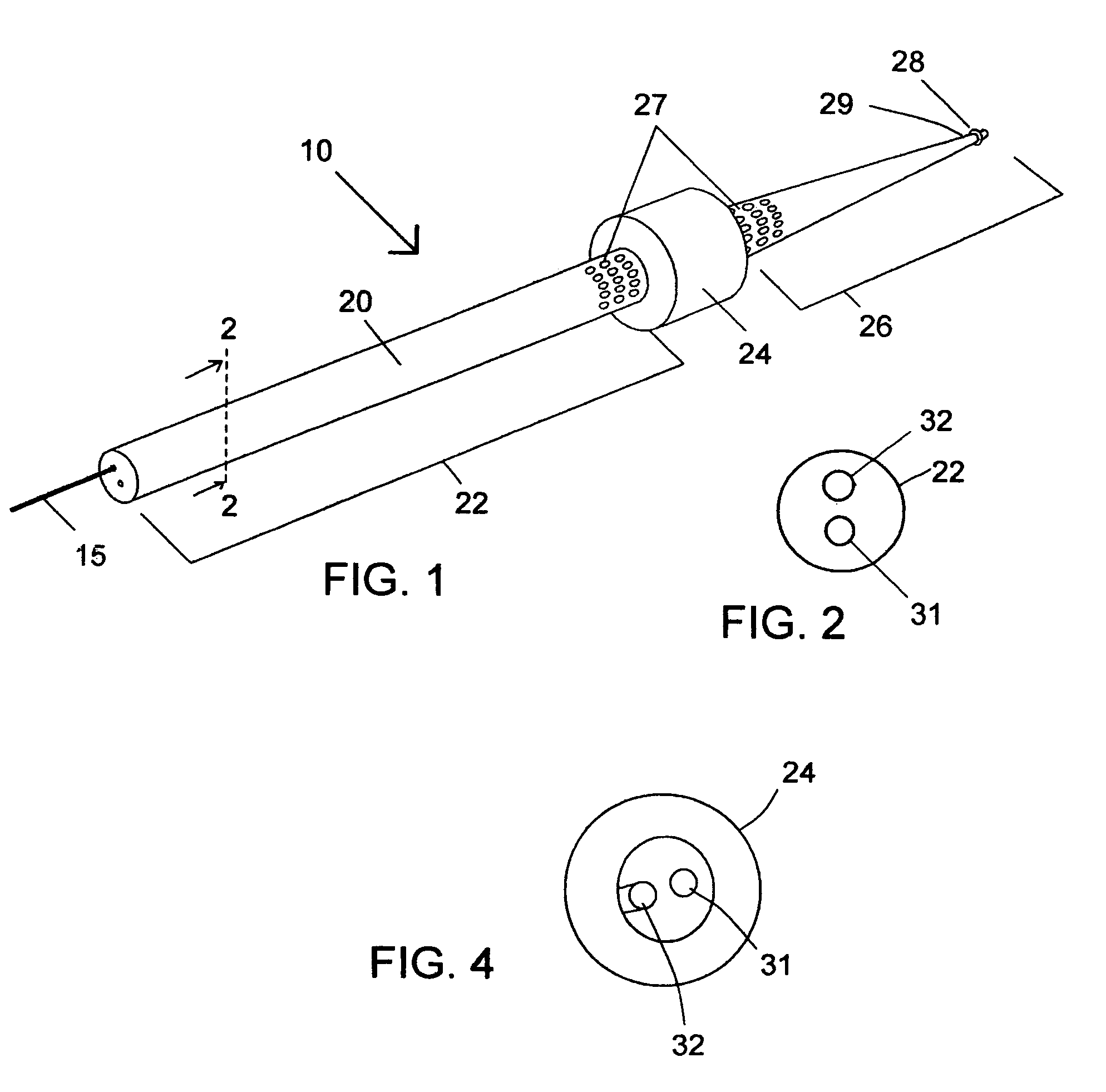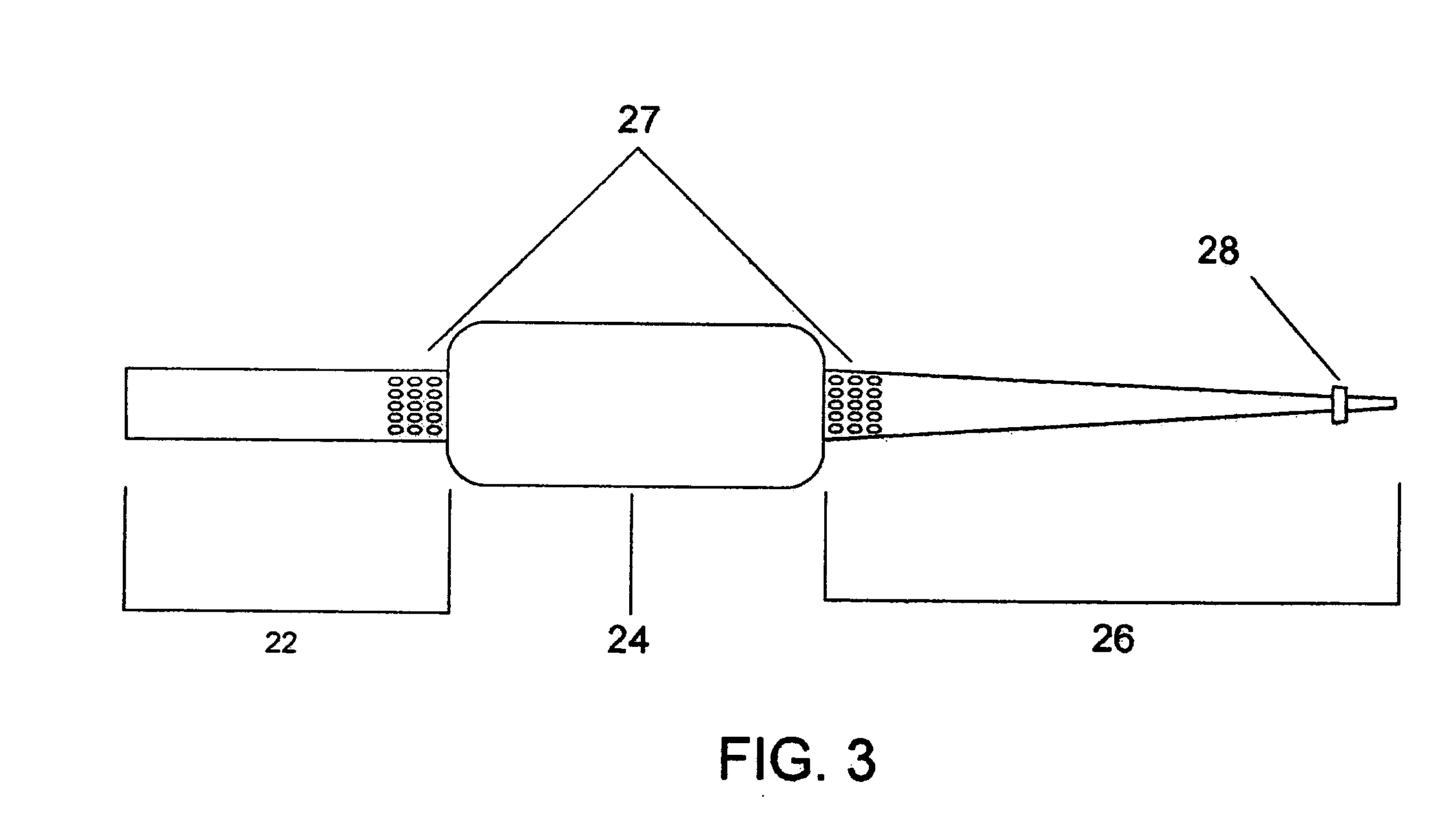Angioplasty device
a technology of balloon catheter and angioplasty, which is applied in the field of intravascular balloon catheter, can solve the problems of damage to the narrowing or blockage of the patient's body, injury or death, and further complications, and achieve the effects of promoting healing, reducing the chance of infection, and reducing the time that the patient is undergoing surgery
- Summary
- Abstract
- Description
- Claims
- Application Information
AI Technical Summary
Benefits of technology
Problems solved by technology
Method used
Image
Examples
Embodiment Construction
[0025]In the following description, for the purposes of explanation, specific devices, method steps and arrangements are set forth in order to provide a more thorough understanding of the invention. It will be apparent to those skilled in the art, however, that the invention may be practiced without these specifically enumerated details and that the preferred embodiment can be modified so as to provide other capabilities. In some instances, well-known structures and methods have not been described in detail.
[0026]FIG. 1 shows in perspective the angioplasty device of the invention. The angioplasty device 10 comprises a combination catheter 20 and a guide wire 15. What is shown is only the distal end of the catheter illustrating the features of the invention. Like conventional vascular catheters, the catheter is very long. In medicine, a catheter typically refers to a tube that can be inserted into a body cavity or duct. Catheters used in angioplasty are adapted to be inserted into ma...
PUM
 Login to View More
Login to View More Abstract
Description
Claims
Application Information
 Login to View More
Login to View More - R&D
- Intellectual Property
- Life Sciences
- Materials
- Tech Scout
- Unparalleled Data Quality
- Higher Quality Content
- 60% Fewer Hallucinations
Browse by: Latest US Patents, China's latest patents, Technical Efficacy Thesaurus, Application Domain, Technology Topic, Popular Technical Reports.
© 2025 PatSnap. All rights reserved.Legal|Privacy policy|Modern Slavery Act Transparency Statement|Sitemap|About US| Contact US: help@patsnap.com



